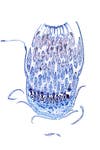An introduction to microscope photography
Table of contents
1-Finding a subject for microscope photography
2-Gear needed for microscope photography
3-Lighting your microscopic subject
4-How I use Kohler lighting when shooting microscopic subjects
5-How I use Darkfield lighting when shooting microscopic subjects
6-How I use Polarized lighting when shooting microscopic subjects
7-Focusing while shooting microscope photography
8-Processing your microscopic images
Table of contents
1-Finding a subject for microscope photography
2-Gear needed for microscope photography
3-Lighting your microscopic subject
4-How I use Kohler lighting when shooting microscopic subjects
5-How I use Darkfield lighting when shooting microscopic subjects
6-How I use Polarized lighting when shooting microscopic subjects
7-Focusing while shooting microscope photography
8-Processing your microscopic images







تعليق